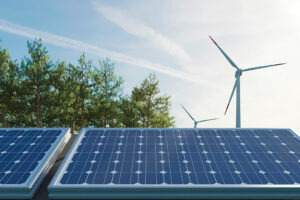Energy storage systems may raise GEA offers by P5-P6/kWh — DoE official
THE INTEGRATION of renewable energy plants with energy storage systems under the green energy auction (GEA) could increase price offers by P5 to P6 per kilowatt-hour (kWh), according to an Energy department official. “We know that adding the energy storage system is going to increase the price; it can go for as high as an […]

THE INTEGRATION of renewable energy plants with energy storage systems under the green energy auction (GEA) could increase price offers by P5 to P6 per kilowatt-hour (kWh), according to an Energy department official.
“We know that adding the energy storage system is going to increase the price; it can go for as high as an addition of about P5 to P6 per kWh,” Energy Undersecretary Rowena Cristina L. Guevara said at an energy forum on Wednesday.
Ms. Guevara said that the reserve price for integrated renewable energy and energy storage systems (IRESS) might be higher compared to the prices offered in previous rounds of GEA.
She said the Department of Energy (DoE) is working on strategies to lower the price for renewable energy capacities paired with energy storage systems.
One strategy the DoE is considering involves transition credits, which monetize emission reductions from projects through the early retirement of coal plants.
“The transition credits, that will take up a little bit of the price of the plant that they will build as renewables,” she told reporters.
Ms. Guevara also said that the Energy department is trying to control the potential cost of IRESS in the renewable energy capacities that the agency will offer.
“We’re still talking with our simulators, then we will do public consultations to gauge what would be feasible for the generators,” she said.
In July, the DoE announced that it would conduct the fourth round of GEA in the fourth quarter this year, which is designed to cover IRESS.
As described by the DoE, IRESS is “a comprehensive energy solution that combines renewable energy technology with energy storage systems.”
Energy storage systems include batteries, flywheel, or pumped storage hydropower systems.
“By combining renewable energy and energy storage, IRESS enhances the stability and reliability of the energy system, enabling a more consistent and efficient supply of power,” the DoE has said.
The government agency said it will release the indicative timeline of GEA-4 activities in the coming months, when it expects to issue a notice of auction.
The GEA program aims to promote renewable energy as one of the country’s primary sources of energy through competitive selection. Renewable energy developers compete for incentivized fixed power rates by offering their lowest price for a certain capacity.
GEA was first conducted in 2022 and attracted 1,996.93 megawatts (MW) worth of bids for renewables, while GEA-2 was held in 2023 and awarded 3,440.756 MW. — Sheldeen Joy Talavera













